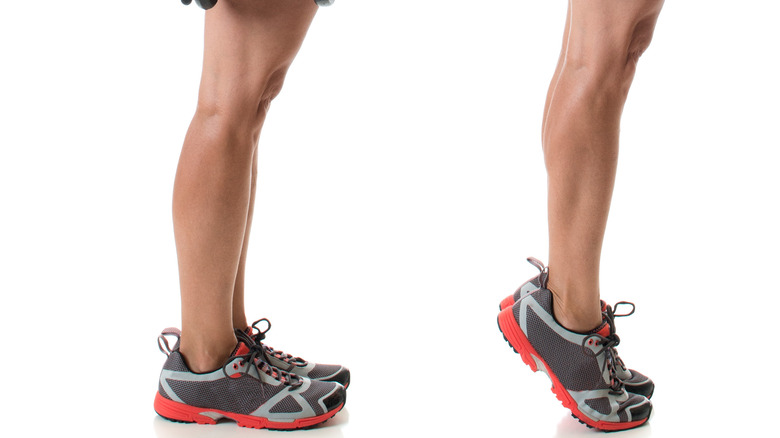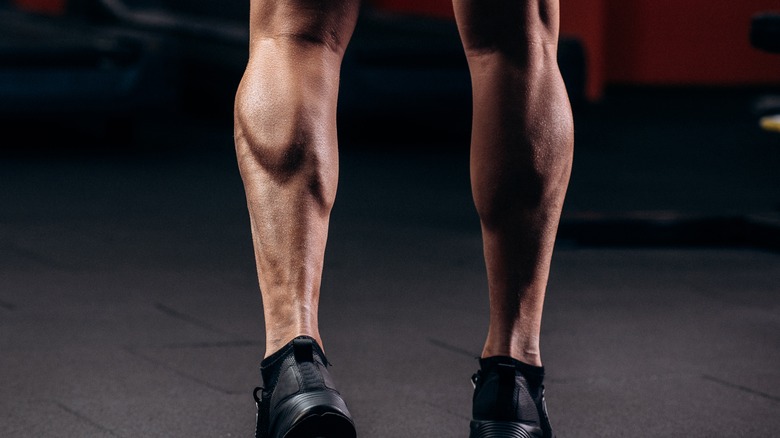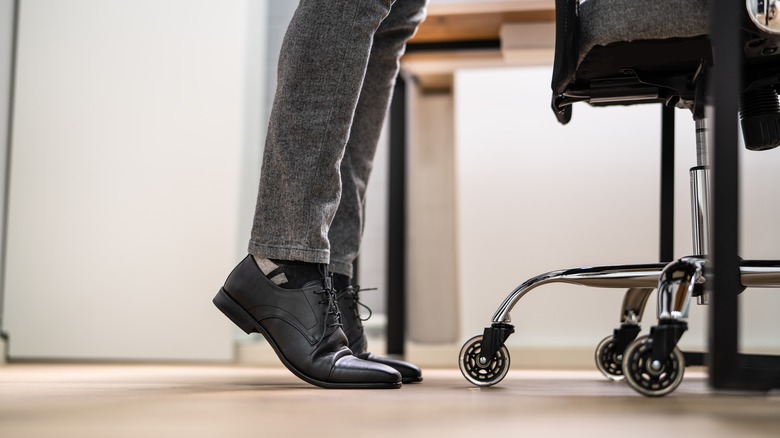What Muscles Are You Working When Doing Calf Raises?
Strong calves can evoke envy in anyone into fitness. Whether the legs are long or short, there's nothing like seeing that bit of definition in the calves. Calf raises are an important tool in anyone's fitness regimen, and it's not just to look good in shorts. According to Healthshots, strong calves can keep your ankles stable, which is important if you're doing any movements involving the lower body. They can also prevent injury and build speed for runners.
Performing a calf raise involves plantar flexion, which is when the foot is positioned with the toes pointed down (via Medical News Today). This plantar flexion is important in everyday moves such as walking or reaching for a glass in the cabinet. Calf raises can help us maintain this plantar flexion, and we should fit them into our workout routine two or three times a week, according to Livestrong. Although the calf raise is a relatively simple move, it involves quite a variety of muscles.
The many muscles in your calf
According to the Cleveland Clinic, the largest muscle in your calf is the gastrocnemius. This muscle runs along the back of your leg and attaches to your heel at your Achilles tendon. The gastrocnemius is often noticeable and gives the calf most of its definition. Just underneath the gastrocnemius is the soleus muscle. This, too, attaches to the heel at the Achilles tendon, as well as attaching to the tibia and fibula bones in the lower leg. The tibia is the larger bone in the lower half of the leg, and the fibula is the smaller (via GetBodySmart).
Two other muscles that power you through calf raises are the flexor digitorum longus and the flexor hallucis longus muscles. The flexor digitorum longus runs along the inside of the back of your lower leg and extends to your toes. The flexor hallucis longus is on the outside of your calf and attaches to your big toe (via Livestrong).
The peroneus muscles also get some work in calf raises. The fibularis brevis attaches to the fibula bone and extends to a bone on the outside of your foot. The fibularis longus also attaches to the fibula but extends across the top of the foot to connect to your big toe (via Livestrong). The plantaris and the tibialis posterior muscles also engage during calf raises (via Healthline).
Strengthening your calves with calf raises
Whether you're a beginner in strength training or a seasoned athlete, you can easily sneak this move into either a workout or an everyday routine. While you're waiting for your tea to steep or you're brushing your teeth, you can perform calf raises. According to Byrdie, beginners should start on a stable surface and avoid raising the heels to the point of pain. Eventually, you'll want to work towards extending the range of motion. If you feel wobbly while doing calf raises, hold onto the counter or a wall so you're not worsening the imbalance.
You can add variety to calf raises by doing them on a step or adding weight. You might feel more of a burn if you hold for 10 seconds at the top of the move or slow down the eccentric (lowering) phase. To challenge your balance, try calf raises with one foot (via Byrdie).



